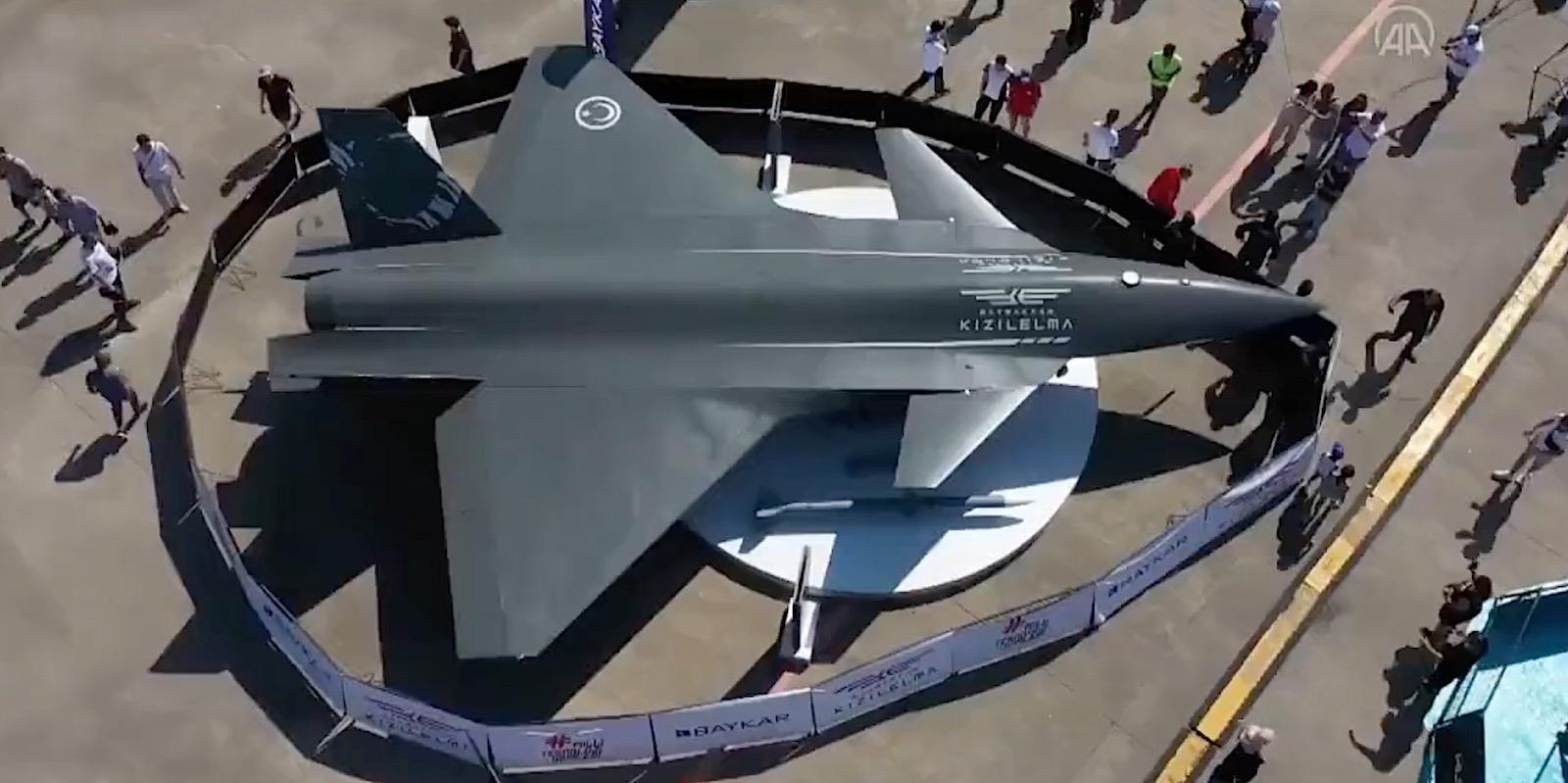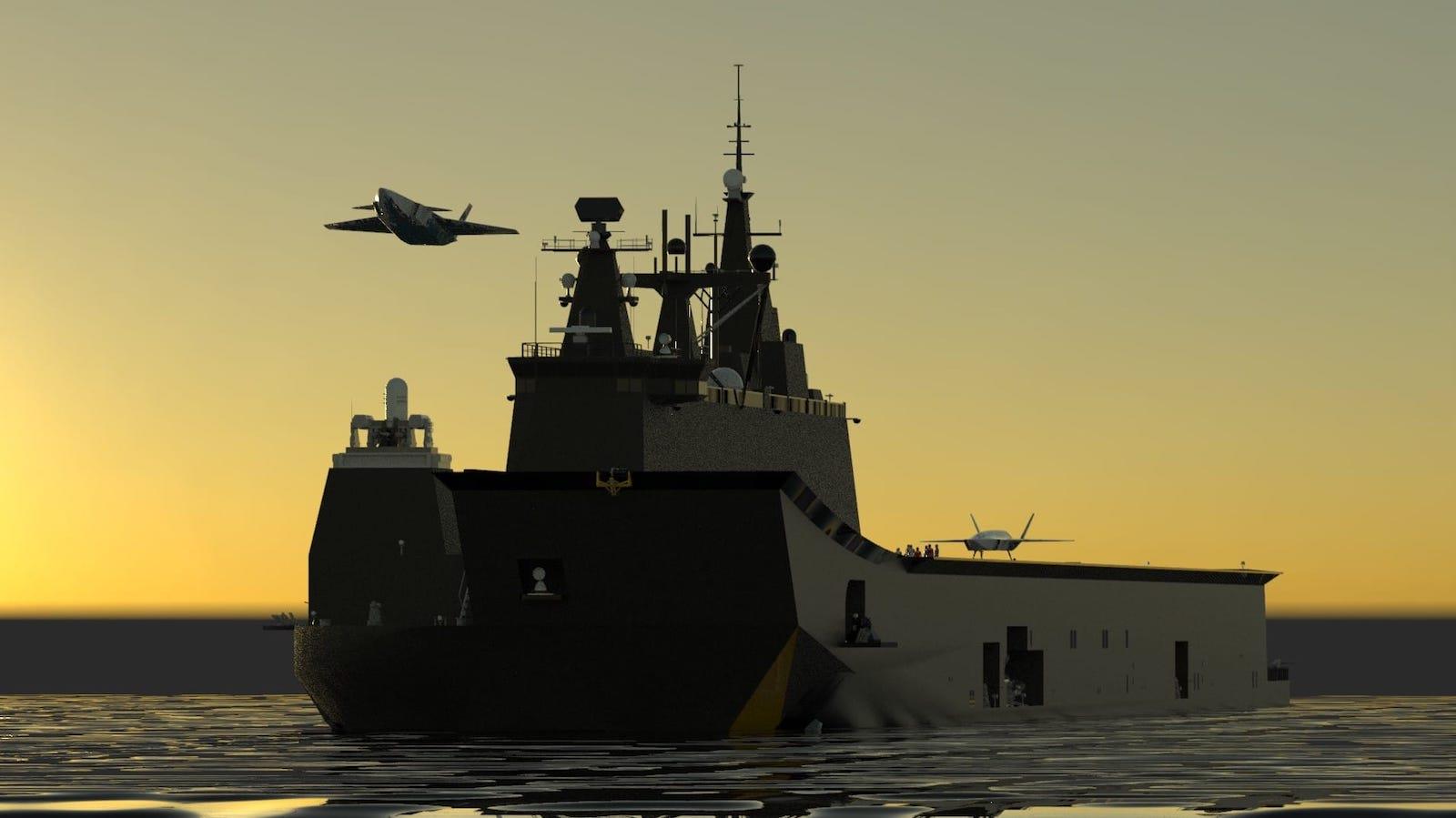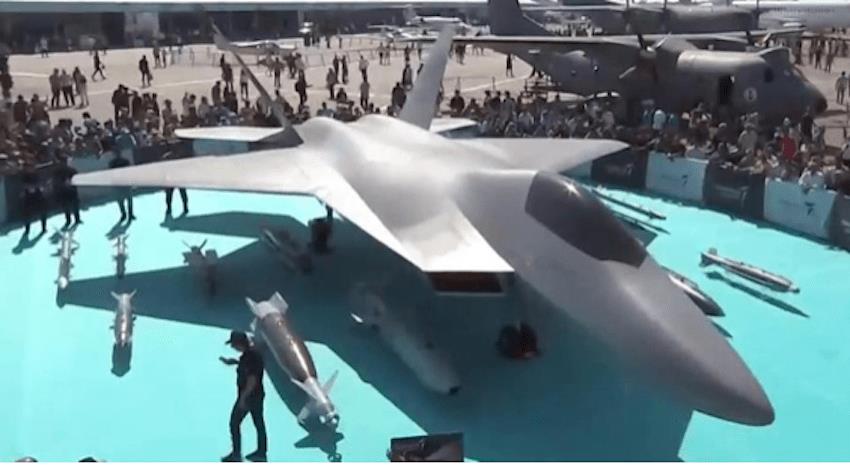(MENAFN- Asia Times) Turkey's Kizilelma drone has just completed taxi and takeoff run tests in preparation for its first flight, a significant move in actualizing its drone carrier concept and possibly augmenting its indigenous 5th generation fighter program.
Turkish drone maker Baykar unveiled a video of its Kizilelma drone performing taxi and takeoff run tests at the Akinci Flight Training and Test Center at Corlu, in northwestern Turkey, as reported by aerotime hub this week. defense publication janes notes that these tests are crucial for the Kizilelma's first flight, which is anticipated in 2023.
“Our goal was to run at slightly slower speeds in the first takeoff roll test, but we exceeded the limit. Thanks to God, Kizilelma completed the first autonomous taxi and takeoff test,” said Selçuk Bayraktar, Baykar chairman of the board and chief technology officer in Baykar's video.
Aerotime Hub notes that the Kizilelma was first announced in July 2021 as a stealthy unmanned combat aircraft with characteristics akin to manned fighter jets.
It has a maximum takeoff weight of six tons, a 1,500-kilogram payload capacity and can conduct air-to-air and air-to-ground missions. In addition, it is likely to be equipped with various air-to-air and air-to-ground munitions developed by Turkey's domestic defense industry.
air recognition mentions that the Kizilelma features a low radar cross-section (RCS) airframe and is equipped with an active electronically scanned array (AESA) radar. In addition, it achieves yaw control using vertical stabilizers and has coupled canard controls for increased maneuverability or for directing airflow to its main wings.

The Kizilelma drone on display. Image: AutoEvolution / Screengrab / Twitter
The same article notes that Kizilelma features an internal weapons bay to preserve stealth while operating in defended airspace.
It is powered by a single Ukrainian non-afterburning Ivchenko-Progress AI-25TLT turbofan engine, giving it a flight range of 930 kilometers, a maximum operating altitude of 10,668 meters, a top speed of 900 kilometers per hour and five-hour flight endurance.
in an article for the warzone this month , Thomas Newdick mentions that later versions of the Kizilelma will have supersonic flight capability, reduced-observable characteristics and be able to conduct missions typically assigned to manned fighter jets.
He notes that using a drone for air-to-air missions may require advancements in flight software, artificial intelligence, command and control, and processing power that may still be beyond Turkey's technological capabilities.
Newdick mentions that future versions of the Kizilelma may be powered by the afterburning Ivchenko-Progress AI-322F engine for supersonic flight and that there is a twin-engine variant under development.
The Kizilelma may soon operate as a replacement for the F-35 aboard Turkey's light aircraft carrier, the TCG Anadolu. In 2017, the US removed Turkey from the F-35 program due to its controversial purchase of Russia's S-400 air defense systems.
That forced Turkey to look for alternative aircraft to operate from the TCG Anadolu, such as its Hürjet light attack aircraft or planned TB-3 naval drone.
asia times has previously reported that Turkey envisions operating naval versions of the Bayraktar TB-2 from the TCG Anadolu, dubbed the TB-3, which is still under development. It is projected to have a takeoff weight of 1,450 kilograms, 24-hour flight endurance and foldable wings for shipboard storage. The TCG Anadolu is envisioned to be able to carry 30 to 50 drones.
Newdick notes that Turkey must modify the TCG Anadolu and Kizilelma to enable carrier operations between the two. He notes that, in its present form, the Kizilelma's landing gear appears to be too lightweight to handle the stress of carrier takeoffs and landings and it is unclear if the Kizilelma has enough engine power for a ski-ramp launch.

Artist impression of UAV's launching from aboard the Anadolu. Image: Baykar Defense
He also notes that Baykar officials have stated that the TCG Anadolu will be equipped with arrestor cables to recover drones.
“To give UAVs takeoff and landing ability on aircraft carriers, their structure must be strong because they are subjected to very high G-shocks. We aim to develop a new unmanned combat aerial vehicle UCAV that will successfully land and take off on LHD Anadolu in one year,” said Baykar CEO Haluk Bayraktar in a march 2021 article for defense news .
However, Air Recognition notes that the Kizilelma is designed in a way that enables takeoff and landing from the TCG Anadolu without the need for a catapult system.
The Kizilelma may put Turkey into a small group of states operating loyal wingman drones. asia times has previously reported on the role of such drones as force multipliers, flying alongside manned aircraft and enhancing the latter's capabilities. Australia, China, Russia, the US and now possibly Turkey have developed such drones to complement their manned combat aircraft fleets.
These loyal wingmen drones reflect the need for mass-produced, expendable drones that provide a numbers advantage or act as mass decoys for a swarming force. They also can extend manned aircraft sensor and weapon ranges by performing reconnaissance and designating targets. At the same time, the latter stays beyond the scope of enemy air defenses and maintains electronic silence.
As such, Turkey's Kizilelma may soon be working with its indigenous fighter, which is currently under development. asia times has reported on Turkey's joint effort with Pakistan to develop the TF-X 5th generation fighter to replace or complement their aging US F-16 fleets.
First announced in 2016, the TF-X is envisioned as a twin-engine multirole fighter with air-to-air and air-to-surface roles.

A full-size TF-X mockup. Photo: TRT World
Turkey and Pakistan plan to use a mixture of US and Russian technologies in the TF-X, as Turkey produces the US General Electric F118 engine under license. In addition, Russia can provide other necessary subsystems such as avionics and propulsion systems, radar, sensors, ejection seats and data links.
However, Turkey and Pakistan have faced significant challenges in the project. The US may block the transfer of jet engine technology to Turkey due to the latter's mentioned controversial purchase of Russia's S-400 surface-to-air missiles.
For Pakistan, the imprecise objectives and deadlines of its national project to produce its fighter jet hint at a limited budget and technological base.
The Kizilelma may thus signify a trend of lesser military powers creating affordable, small, robotized air forces which can project power, stage precision strikes, and in the future, conduct unmanned air defense missions that are presently performed by costly manned platforms.